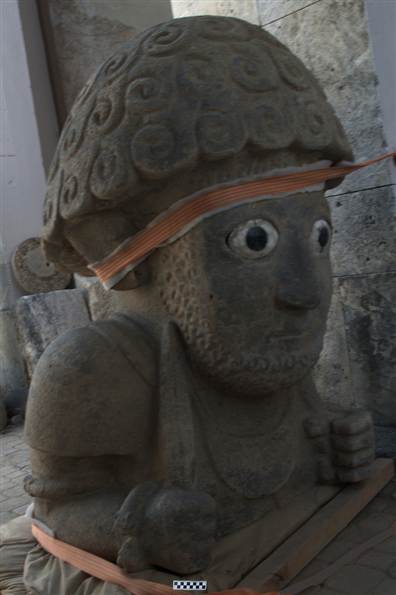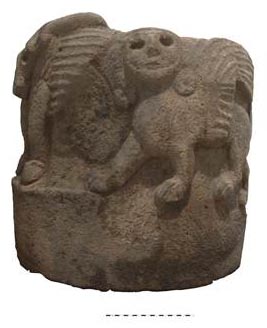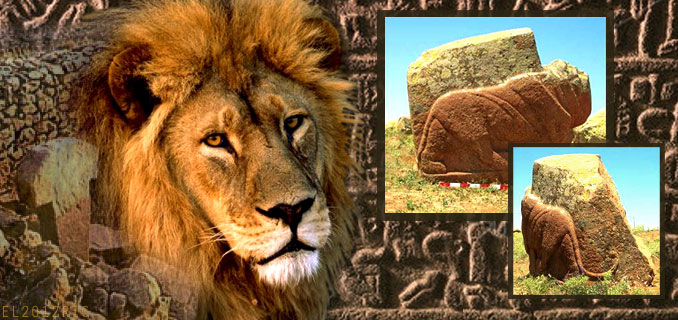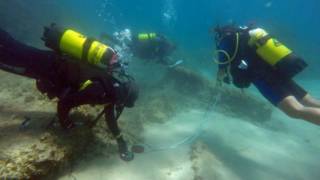Warrior king statue discovered in ancient Mediterranean city
Source: msnbc.msn.com
It guarded upper citadel of a Neo-Hittite kingdom’s capital about 738 B.C. in Turkey A newly discovered statue of a curly haired man gripping a spear and a sheath of wheat once guarded the upper citadel of an ancient kingdom’s capital.
The enormous sculpture, which is intact from about the waist up, stands almost 5 feet (1.5 meters) tall, suggesting that its full height with legs would have been between 11 and 13 feet (3.5 to 4 m). Alongside the statue, archaeologists found another carving, a semicircular column base bearing the images of a sphinx and a winged bull.

A newly excavated statue standing 5 feet (1.5 m) tall may have represented a Neo-Hittite king.
The pieces date back to about 1000 B.C. to 738 B.C. and belong to the Neo-Hittite Kingdom of Patina in what is now southeastern Turkey. They were found at what would have been a gate to the upper citadel of the capital, Kunulua. An international team of archaeologists on the Tayinat Archaeological Project are excavating the ruins.
The Neo-Hittites were a group of civilizations that arose along the eastern Mediterranean after the collapse of the Hittite Empire around 1000 B.C. When the statues were carved, the area was emerging from the Bronze Age and entering into the Iron Age.
 ...text... |
The column base stands about 3 feet (1 m) tall, with a diameter of 35 inches (90 centimeters). The column likely stood against a wall, as only the front is decorated with carvings of a winged bull flanked by a sphinx.
The presence of such statues was common in Neo-Hittite royal cities, the researchers said. The newly discovered carvings would have guarded a passageway of gates to the heart of the city.
"The two pieces appear to have been ritually buried in the paved stone surface of the central passageway," Tayinat Project director Tim Harrison, a professor of archaeology at the University of Toronto, said in a statement.
The passageway and gates seems to have been destroyed in 738 B.C., when Assyrian forces conquered the Neo-Hittite city. The area then appears to have been paved over and turned into a courtyard. Archaeologists have also uncovered smashed Neo-Hittite slabs and pillars as well as two carved life-size lions.
Article from: msnbc.msn.com
Read more about the mysterious Neo-Hittite Lion Statues.

Also tune into Red Ice Radio:
Joseph Davidovits - Egyptian Building Techniques, The Israel Stele & Amenhotep, son of Hapu
Robert Schoch - Hour 1 - The Mystery of the Sphinx
William Glyn-Jones - Lascaux Cave Art, Egypt’s Oldest Art, Nativity Scene Star Map & Poussin’s Shepherds of Arcadia
John Anthony West & Laird Scranton - Göbekli Tepe
Klaus Schmidt - Göbekli Tepe: The World’s Oldest Temple?
Christopher Knight & Alan Butler - Civilization One, The Moon & The Megalithic Yard






















